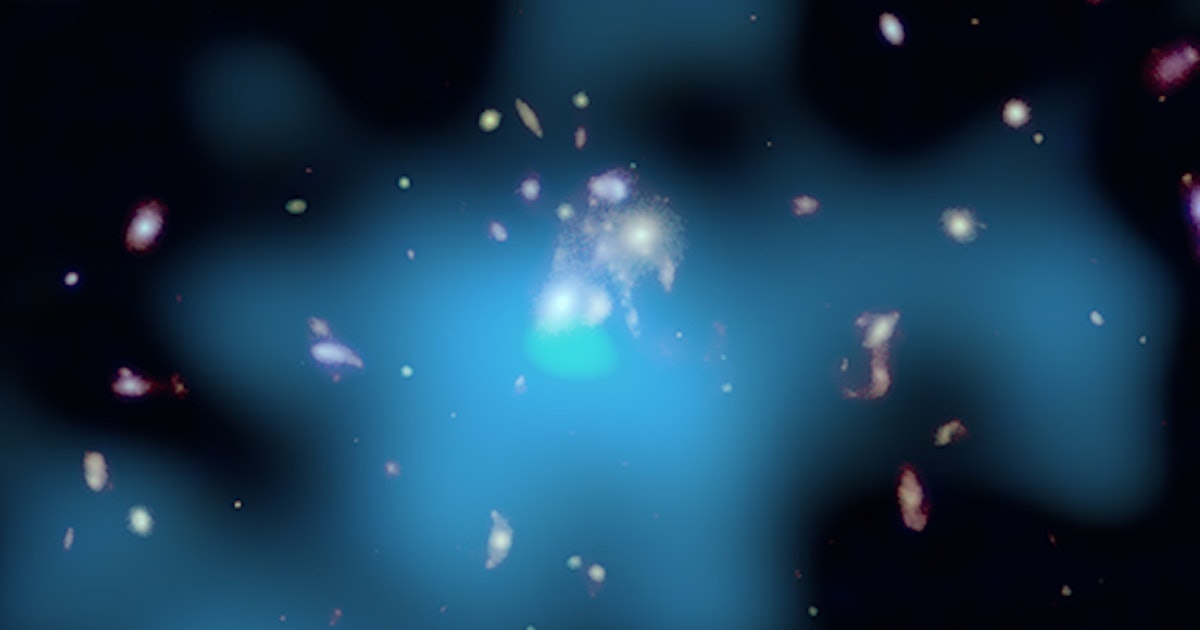And here's another article:
Black hole shatters physics after devouring unknown object 'Haven't seen anything like

But 800 million light years away, a black hole devoured an unidentified object and the resulting cosmic merger released enough energy to wrinkle the fabric of spacetime.
These gravitational waves travelled through the universe and eventually over Earth on August 14, 2019.
Three detectors in the US sensitive enough to measure such minuscule action recorded the activity, but as scientists decoded the information they were left scratching their heads.
Searching for where very unequal mass black hole binaries come from

The astronomers argue that the most likely way to produce this unlikely pair may be through two prior black hole pair mergers in the cluster, a process that can ultimately result in a black hole with the correct inferred spin. First, two black hole binary pairs each merge; each of these pairs has black holes of comparable moderate masses and each produces a more massive black hole.
Although such a series of events are rare, the scientists show that known star clusters could provide the right environments for it to occur. The new result and analysis, as in the case of previous gravitational wave discoveries, have expanded our view of cosmic variety while tacking fundamental assumptions. One of those assumptions is that black holes are typically formed from stellar collapse with low spins.
Colliding star may have switched-off black hole's X-ray corona – Physics World

Over the course of just one year, the bright X-ray corona surrounding a supermassive black hole dipped dramatically in brightness, before steadily recovering its initial luminosity. The event was observed by an international team of astronomers, led by Claudio Ricci at Diego Portales University in Chile, who suggest that the dimming could have been caused by a wayward star being torn apart by tidal forces.
Most normal galaxies are centred on a super massive black hole that creates an active galactic nucleus (AGN) – an extremely bright source of radiation created as matter accelerates into the black hole. AGN's are known to host bright coronas of X-rays within their inner accretion disks. While the processes by which these structures form are not fully understood, they are thought to involve tangled magnetic fields situated close to the black hole.
Were you following this:
When a black hole doesn't swallow everything up, something remarkable happens — study

Black holes are known for being cosmically ruthless . These objects of compact mass swallow up surrounding material, and not even light can escape their strong gravitational pull.
* * *
Astronomers have recently observed a rather passive black hole, one that does not affect its surroundings in a distant galaxy cluster. Rather than swallowing up material itself, the black hole's inactivity allowed for surrounding star formation to flourish.
What happens if the black hole doesn't interfere with the formation of stars? | FREE NEWS
Galactic clusters contain hundreds or thousands of galaxies permeated with hot gas. Ejections of material fueled by a supermassive black hole at the center of a cluster of galaxies usually prevent this hot gas from cooling and forming a huge number of stars. This heating allows supermassive black holes to influence or control the activity and evolution of the host cluster.
But what happens if this black hole stops being active? The SpARCS104922.6 + 564032.5 galaxy cluster (SpARCS1049 for short), located 9.9 billion light-years from Earth, provides an answer to this question.
Mystery as "silent" black hole makes galaxy spawn torrent of stars
A mysteriously quiet black hole has led to a galaxy forming an extraordinary number of stars - with a mass equivalent to 900 new suns per year.
The torrent of new stars in the distant galaxy is down to the lack of activity from the huge black hole at its centre.
In most galaxies, blasts of materials from a central supermassive black hole prevent hot gas from cooling down to form stars.
But in one galaxy cluster, SpARCS 104922.6+564032.5, 9.9 billion light years from Earth, the black hole is mysteriously quiet.
Meet The UKM Astronomer Who Found Four Super Massive Black Holes In Space | News | Rojak

Happening on Twitter
Supermassive black holes usually shape the growth of their surrounding galaxies with the energy they eject – but wh… https://t.co/Jlhmy9xXGH NASA_Marshall (from Huntsville, Alabama USA) Tue Aug 04 14:23:02 +0000 2020
Black hole fails to do its job @ChandraXray @AAS_Office https://t.co/sapJixsF4y physorg_com Mon Aug 03 17:53:19 +0000 2020
No comments:
Post a Comment